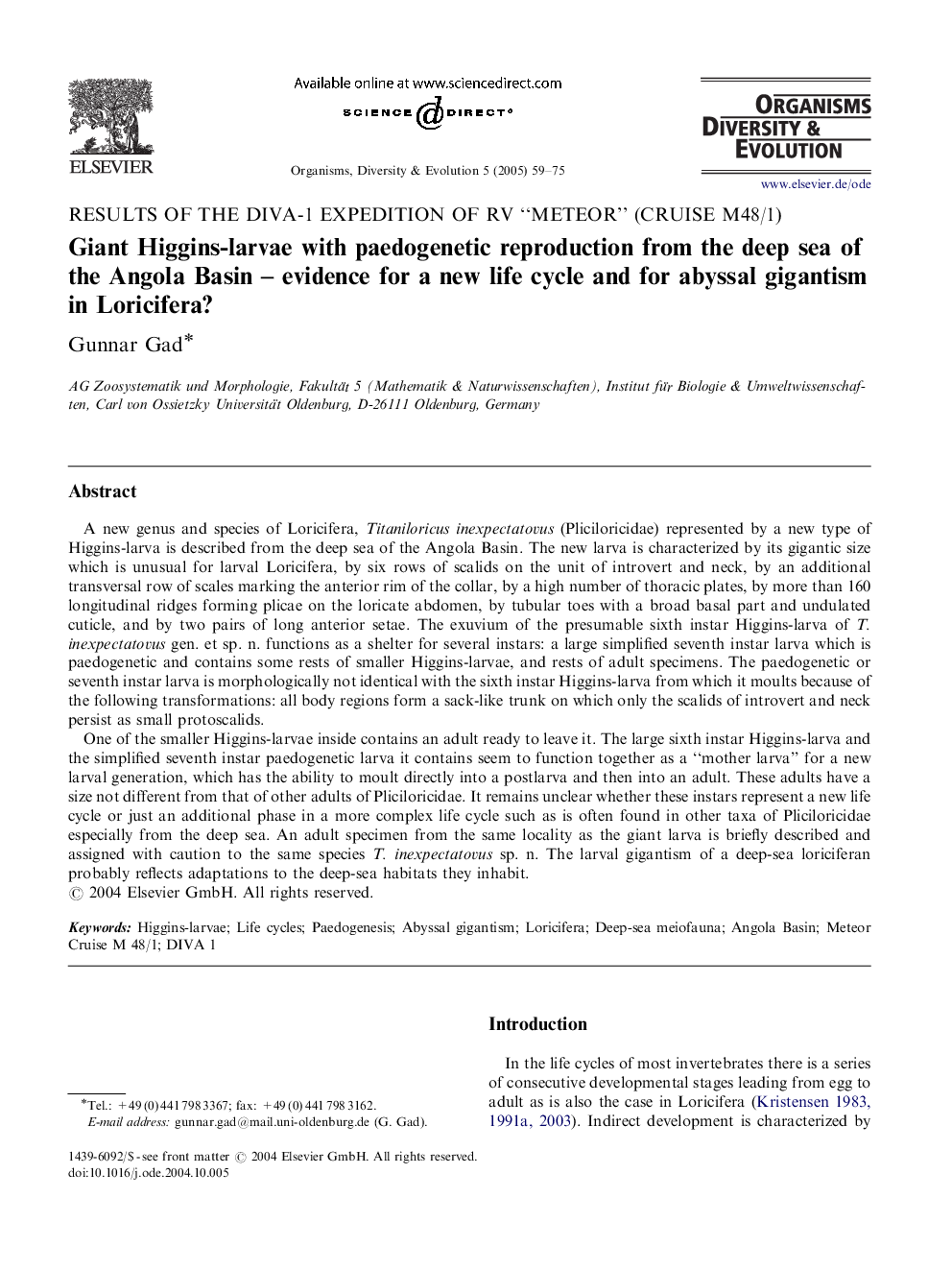| Article ID | Journal | Published Year | Pages | File Type |
|---|---|---|---|---|
| 9461469 | Organisms Diversity & Evolution | 2005 | 17 Pages |
Abstract
One of the smaller Higgins-larvae inside contains an adult ready to leave it. The large sixth instar Higgins-larva and the simplified seventh instar paedogenetic larva it contains seem to function together as a “mother larva” for a new larval generation, which has the ability to moult directly into a postlarva and then into an adult. These adults have a size not different from that of other adults of Pliciloricidae. It remains unclear whether these instars represent a new life cycle or just an additional phase in a more complex life cycle such as is often found in other taxa of Pliciloricidae especially from the deep sea. An adult specimen from the same locality as the giant larva is briefly described and assigned with caution to the same species T. inexpectatovus sp. n. The larval gigantism of a deep-sea loriciferan probably reflects adaptations to the deep-sea habitats they inhabit.
Keywords
Related Topics
Life Sciences
Agricultural and Biological Sciences
Animal Science and Zoology
Authors
Gunnar Gad,
